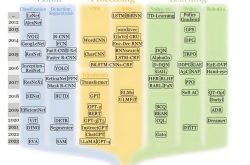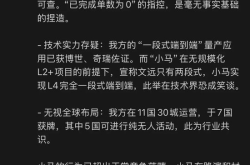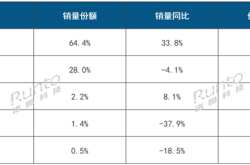Xiaomi Financial Report: Navigating New Challenges Amidst Robust Growth
![]() 03/27 2025
03/27 2025
![]() 676
676
Xiaomi Group recently unveiled its 2024 full-year and fourth-quarter financial report, revealing total revenue of RMB 365.9 billion, a robust 35.0% increase year-on-year, with adjusted net profit soaring 41.3% to RMB 27.2 billion, setting a new record. Notably, the fourth-quarter revenue alone reached RMB 109 billion, marking a 48.8% year-on-year surge and the first time quarterly revenue surpassed RMB 100 billion.
As a prominent consumer electronics brand, Xiaomi continues to attract significant attention. Amidst the slowdown in the consumer electronics industry, Xiaomi's 35% revenue growth and quarterly revenue exceeding RMB 100 billion underscore the success of its "Mobile Phone × AIoT × Automobile" ecological strategy. These achievements reflect both the company's progress in premiumization and the growth opportunities stemming from ecological expansion.
Premiumization Breakthroughs Spark Market Renewal
Despite the overall decline in smartphone shipments, Xiaomi achieved countercyclical growth. The financial report indicates that Xiaomi's mobile phone business revenue in 2024 totaled RMB 191.8 billion, up 21.8% year-on-year, with global shipments reaching 169 million units, ranking third globally and increasing 15.7% year-on-year.
Firstly, Xiaomi has consistently advanced its premiumization strategy, redefining brand value. In recent years, the company has focused on penetrating the high-end market. The Xiaomi 14 series successfully gained traction in this segment through its Leica imaging systems and 120W fast charging technology. Additionally, the Xiaomi 15 series, launched on October 31, 2024, has activated over 2.5 million units. According to third-party data, Xiaomi's high-end smartphone shipments accounted for 23.3% of total shipments in mainland China in 2024, an increase of 3.0 percentage points year-on-year. This rise in high-end models has not only bolstered user loyalty but also fueled profit growth.
Secondly, Xiaomi's escalating R&D investment has laid a solid foundation for steady growth in its mobile phone business. The report shows that R&D investment in 2024 reached RMB 24.1 billion, a 25.9% increase year-on-year. Consequently, Xiaomi has made significant advancements in chips, imaging algorithms, and AI technology. For instance, Xiaomi's HyperOS system integrates a large language model, significantly enhancing the response speed of the voice assistant and improving multitasking efficiency. These technological strides support product innovation and provide the underpinning for differentiated product competition.
Thirdly, Xiaomi's commitment to in-house R&D has mitigated supply chain risks. Amidst the global chip shortage, Xiaomi's in-house chip strategy has proven effective, with shipments of the Penta C2 imaging chip exceeding 100 million units and improved inventory turnover efficiency for key components. Moreover, Xiaomi has reduced screen procurement costs through the LTPO 3.0 screen jointly developed with BOE. Notably, Xiaomi has built a comprehensive industrial chain from design to packaging and testing by investing in multiple semiconductor companies, significantly reducing its mobile phone business's reliance on Qualcomm chips.
Scenario-Based Ecosystem Surpasses RMB 100 Billion Threshold
The transition from a "hit product logic" to an "ecological logic" sparked qualitative changes in Xiaomi's IoT business in 2024. The report reveals that Xiaomi's IoT and consumer products business revenue surpassed the RMB 100 billion mark for the first time, reaching RMB 104.1 billion, a 30.0% year-on-year increase. From smart home appliances to consumer electronics, and from domestic to global markets, Xiaomi's ecological layout, initiated in 2013, is constructing a bulwark against cyclical fluctuations through a closed loop of hardware + software + services.
On one hand, Xiaomi's smart home ecological closed loop has taken shape, significantly enhancing user experience. After years of development, Xiaomi's smart home layout has become increasingly comprehensive. Additionally, Xiaomi's robust AIoT platform connectivity enables seamless interconnection and interoperability among various devices, offering users a more convenient experience. Relevant data shows that Xiaomi's IoT platform has successfully connected 860 million devices, and the monthly active users of the Mi Home App have surpassed 100 million for the first time. This high-frequency interaction and scenario linkage greatly optimize user experience, enhance user loyalty, and drive increased repurchase rates.
On the other hand, Xiaomi demonstrates a keen insight into consumer needs and a precise category expansion strategy. After establishing a strong presence in the traditional home appliance sector, Xiaomi began expanding its product categories to cater to new trends in consumption upgrades, such as air fryers and wash-and-dry combo machines. Furthermore, Xiaomi has fortified its position in niche markets through technological iteration. For instance, in the robotic vacuum cleaner market, the Xiaomi Mijia Pro version reduces the failure rate with AI obstacle avoidance algorithms; in the smart lock market, Xiaomi improves recognition speed through 3D structured light technology. The continuous expansion of product categories allows Xiaomi to cover a broader spectrum of consumer groups, thereby driving business growth.
From 0 to 1: Xiaomi Automobile Makes a Stunning Entrance
The financial report highlights that in 2024, Xiaomi Group's innovative businesses, including smart electric vehicles, generated operating revenue of RMB 32.8 billion, accounting for 9% of total revenue. Among these, smart electric vehicle sales revenue amounted to RMB 32.1 billion. From its initial foray into the new energy vehicle market to the delivery of the 200,000th Xiaomi vehicle, Xiaomi's automotive business has created a remarkable sales milestone.
Firstly, precise positioning has broken the price war dilemma. The Xiaomi SU7 series has disrupted market conventions with its standard high-end intelligent driving and low-price strategy. The success of the SU7 series validates the feasibility of affordable pricing for high-end configurations. While the industry grapples with the positioning of electric sports cars, Xiaomi employs high-end configurations such as lidar and urban NOA, combined with more affordable prices, directly targeting the gap in the mid-to-high-end market. Data shows that users under 30 years old account for over 45%, and female users have increased by 200%. This diverse user profile shatters the stereotype of traditional automakers being male-dominated. More importantly, this strategy not only boosts sales but also drives the sales of peripheral ecological products, such as in-car air purifiers and smart charging piles, which have witnessed year-on-year growth.
Secondly, technology reuse reduces innovation costs. The rapid implementation of Xiaomi's automotive business benefits from the technological dividends of its mobile phone business. For example, AI image processing technology is migrated to the autonomous driving perception system, the interaction logic of MIUI optimizes the in-vehicle OS, and even supply chain management experience is reused in automotive production. This strategy of technology transfer significantly shortens the product development cycle. More crucially, technology sharing within the ecosystem creates a unique synergistic effect: mobile phone users can directly upgrade their in-vehicle systems, and this seamless user experience becomes an advantage that competitors find difficult to replicate.
Thirdly, the outbreak of ecological synergistic effects. The vehicle-home interconnection function covers 90% of Mi Home devices, meaning that cars are no longer isolated terminals. Users can control their smart home appliances from within the car and remotely manage their vehicles through mobile apps. This full-scenario intelligent experience fosters unique user loyalty. Among automotive users, the purchase conversion rate for Mi Home ecological products is as high as 65%, far exceeding the industry average. The more profound impact lies in the fact that the automotive business is now feeding back into the ecosystem, and the integration of in-vehicle data with home data provides massive material for AI algorithm optimization, forming a virtuous cycle of data-technology-product.
Sustainability Test Under High Growth
As Xiaomi Group reaches new heights, it must confront the reality that beneath the surface prosperity lie hidden challenges. Intense competition in the smartphone market, profitability pressures in the automotive business, geopolitical risks in the globalization process... These challenges are like the sword of Damocles, constantly reminding the company that the quality of growth is paramount.
Firstly, core businesses face a ceiling. While smartphone shipments have grown steadily, the overall market is shrinking, and a slowdown in growth is inevitable. More concerningly, emerging markets such as India are witnessing the emergence of local brands that seize market share with more aggressive pricing strategies. Concurrently, the gross margin of domestic low-to-mid-end models is declining, widening the profit gap with high-end models, and product structure optimization is imperative. Striking a balance between defense and breakthrough will be crucial for Xiaomi's future development.
Secondly, there is an imbalance between input and output in innovative businesses. Despite impressive sales in the automotive business, losses in this segment are still expanding. This is closely tied to Xiaomi's internet-centric approach, which involves using subsidies to gain market share and leveraging ecological traffic to expand the user base. However, there are inherent differences between the economies of scale in the automotive industry and consumer electronics: high battery costs, long R&D cycles, and low vehicle replacement frequencies may lead to profitability pressures in the short term. If the gross margin cannot be improved through large-scale production and ecological synergy, the automotive business may drag down the group's overall profitability.
Thirdly, there is a lack of adaptability in the globalization process. Geopolitical risks and cultural differences pose invisible obstacles to Xiaomi's overseas expansion. For instance, the EU's digital regulations require companies to open data interfaces, which may impact advertising monetization capabilities. More complexly, different markets have vastly different definitions of cost-effectiveness. For example, Southeast Asian users prioritize extremely low prices, while European users value quality and brand more. Finding the right balance between standardization and localization will be essential for deepening Xiaomi's globalization strategy.
Xiaomi's 2024 financial report underscores the explosive potential of its ecosystem, yet the substantial sunk costs of automotive investment, diminishing marginal benefits of ecological synergy, and geopolitical uncertainty are testing the strategic resilience of this tech giant. Finding the right balance between scale expansion and profit quality, ecological breadth and user experience, global ambitions, and localization risks will be Xiaomi's core proposition in the next decade. After all, the true moat has never been a single product or technology but the ability to consistently create user value.








